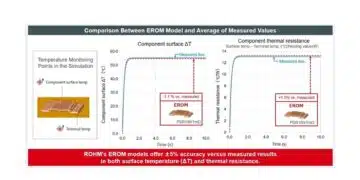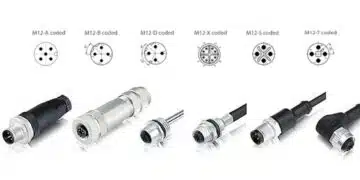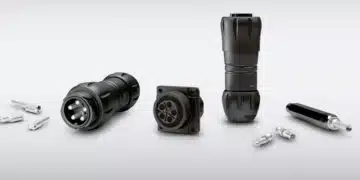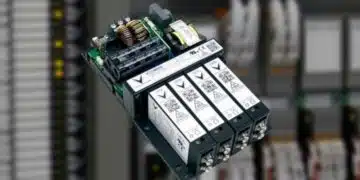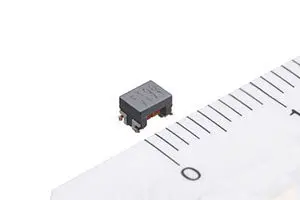source: TDK news
Jun. 20, 2017. TDK Corporation presents the ACT1210L common-mode choke – the world’s smallest of its type for automotive Ethernet applications. Its dimensions are just 3.2 mm x 2.5 mm x 2.5 mm, making it just half the size of the existing ACT45L choke which measures in at 4.5 mm x 3.2 mm x 2.8 mm. Series production of the new common-mode chokes starts in June 2017.
Despite the 50 percent reduction in size, the ACT1210L choke – which is qualified to AEC-Q200 – has an excellent Scd21 mode conversion characteristic that is equivalent to that of the existing ACT45L. This key parameter expresses the amplitude relationship between differential and common-mode signal and should be as large as possible. The combination of miniaturization with excellent electrical parameters was made possible by TDK’s advanced design and winding technology. Due to the special connection technology of the windings, the common-mode chokes are suitable for a wide temperature range from -40 °C to +125 °C. Furthermore, thanks to the fully automated manufacturing process, the new ACT1210L components offer a very high reliability and meet the highest quality requirements.
Typical applications for these Ethernet common-mode chokes are onboard cameras that can be further miniaturized and designed for even higher operating temperatures. In future, TDK will present components for an even wider temperature range in order to further simplify the design of high-speed communication systems for vehicles.
* Status: March 2017 according to studies by TDK
Glossary
Scd21 mode conversion characteristic: Amplitude ratio between differential and common-mode signal; the higher this value, the greater the common-mode suppression
Main applications
- Automotive Ethernet applications
Main features and benefits
- World’s smallest components of this type
- Scd21 mode conversion characteristic equivalent to that of the existing ACT45L common-mode chokes
- Suitable for automotive applications, thanks to a wide temperature range from -40 °C to +125 °C
- Very high reliability and quality due to fully automated manufacture
Key data
-
Type Inductance
at 100 kHz [µH]DC resistance
[Ω]Rated current
[mA]Rated voltage
[V]ACT1210L-201-2P-TL00 200 +30 / -10% 5.5 max. 70 max. 80 max.



